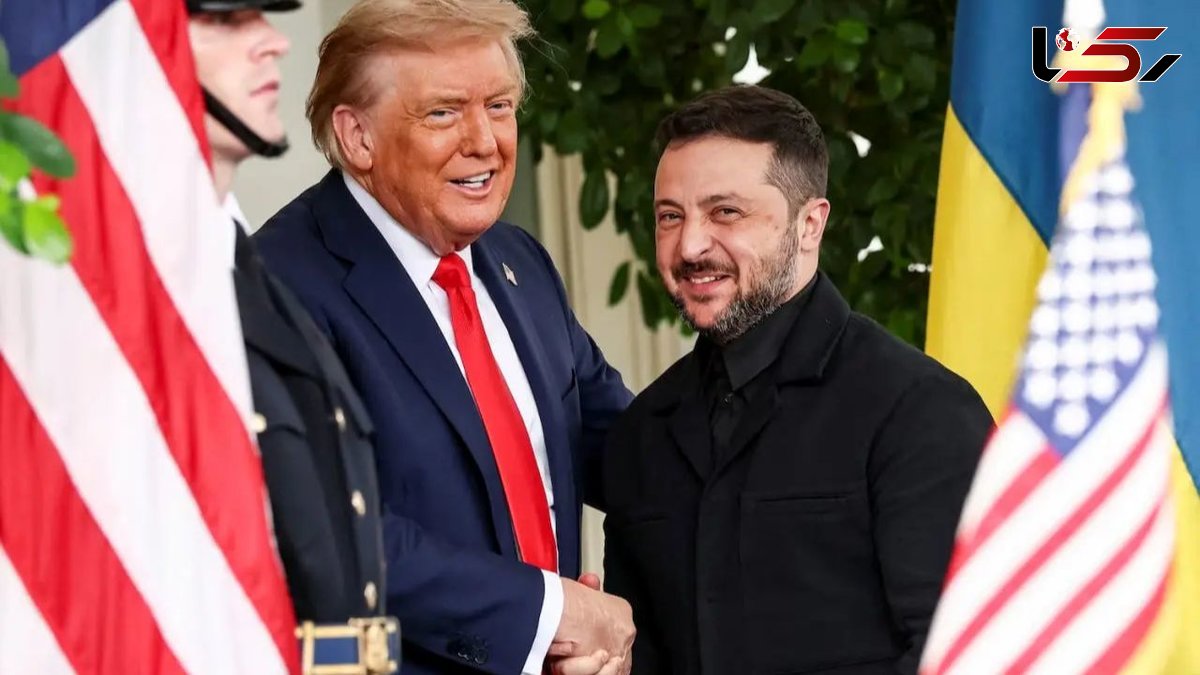Untold Secrets of the Controversial White House Meeting: Trump and Hidden Ties with Putin
Rokna Political Desk: The historic and tense meeting between Donald Trump and Volodymyr Zelensky at the White House, Ukraine’s request for long-range Tomahawk missiles, and the sensitive consequences of this decision in the political interplay between Washington, Kyiv, and Moscow are set to shape the future of European security.

On Friday, U.S. President Donald Trump and Ukrainian President Volodymyr Zelensky held a historic and highly charged meeting at the White House. The central topic of discussion was Kyiv’s request to acquire long-range Tomahawk missiles.
During the meeting, Zelensky hoped his visit to Washington would result in commitments for new weapons for Ukraine, allowing him to target deeper into Russian territory and increase pressure on the Kremlin. However, Trump, who had just concluded a long phone call with Vladimir Putin, adopted a more cautious approach, stating that he did not intend to provide Tomahawk missiles to Ukraine at this time. Observers believe that Trump’s main goal in raising the Tomahawk issue was to bring Moscow to the negotiating table, rather than simply increasing Ukraine’s military capability. Tomahawk missiles, with an approximate range of 1,550 miles, can target energy infrastructure, military bases, and facilities near Moscow, creating significant political and psychological pressure on Russia. Despite Trump’s reluctance, Ukraine remains hopeful that, alongside recent successes with drones and domestic missiles, it can push Russia toward peace.
Zelensky emphasized Ukraine’s readiness for negotiations and requested bilateral security guarantees from the United States, reiterating that NATO membership remains a top priority. He stated that “Putin must be pressured into a ceasefire.” Trump, addressing reporters, highlighted that flexibility could increase the chances of ending the war, adding: “I’ve been played by the best my entire life, but I’ve always come out successful.” Analysts suggest that Friday’s meeting, though direct and sometimes tense, is part of a broader strategy designed by Washington in collaboration with Kyiv to pressure Russia.
Recent successful Ukrainian strikes on Russian energy and military infrastructure, backed by U.S. intelligence, have increased Kyiv’s deterrence capability. Simultaneously, falling oil prices have complicated Russia’s war machine. While Tomahawk missiles remain an option, Trump proposed holding another meeting with Putin in Budapest in the coming weeks. This meeting could offer a direct negotiation opportunity while reinforcing Washington’s role as mediator.
Analysts argue that Trump’s approach reflects a combination of maximum pressure and careful management rather than merely sending weapons, aiming to stop the war largely along current lines while ensuring Russia retains some control and Ukraine gains security guarantees. Though a complete and just peace may not be achieved, this strategy could represent a relative victory for Kyiv and a key defensive line for European security. The evident disagreement between Trump and Zelensky over the delivery of long-range weapons underscores the complexity of policy and diplomacy in Ukraine. Trump’s emphasis on balancing diplomacy with military capability demonstrates his intent to combine pressure with flexibility.
As the Budapest meeting approaches, Trump still has multiple options on the table: the potential deployment of Tomahawks, establishing no-fly zones with European support, and targeting key Russian infrastructure. These dynamics indicate that Washington, Kyiv, and Moscow are at a critical crossroads of policy, warfare, and diplomacy, where every decision could shape Ukraine’s future and European security.
Send Comments